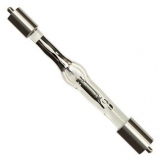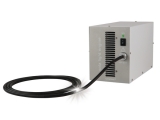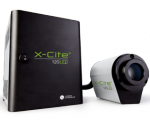This video details the benefits of going mercury free through Green Light Microscopy! Take a look:
Mercury | Metal-Halide | LED
| LIGHT SOURCE | PROS | CONS |
|---|---|---|
| Mercury |
|
|
| Metal-Halide |
|
|
| LED |
|
|



Benefits
ACADEMIC RESEARCH BENEFITS
- LED light sources are ideal for live-cell imaging with no IR or UV output
- LED light sources have consistent intensity output on all time scale tests that ensures data quantification is consistent and accurate
ECONOMIC BENEFITS
- Save time and money: No bulbs to purchase, change, or align
- Mercury bulbs have a lifespan of 200 hours; LED light sources have a lifespan of 20,000 hours
- 100 mercury bulbs = 1 LED light source
- Return on investment:
- $200/mercury bulb, 100 bulbs = $20,000
- LED Retrofit = $5000-$6000
ENVIRONMENTAL BENEFITS
- Saves hundreds of mercury containing bulbs from the waste stream
- 110 mg mercury/bulb, 110 bulbs = 12 g of mercury
- Reduce power consumption
- Upwards of 95% (sources turned on and off during experiments)